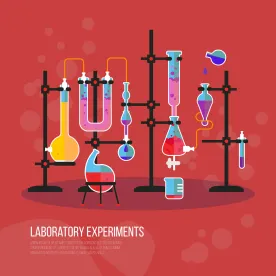Virtually all manufacturers and importers of chemicals for the past 11 years are now subject to a new TSCA reporting requirement known informally as the TSCA Inventory Reset. Reports are due by February 7, 2018. All processors of chemicals have an opportunity and an incentive to report as well, and may do so by October 5, 2018. The final Inventory Reset rule was published on August 11, 2017,[1] and is effective immediately. The final rule is available here, and will be codified as 40 C.F.R. Part 710, Subpart B.
Unlike the other framework rules under the amended Toxic Substances Control Act (TSCA) that EPA published on July 20, 2017,[2] the Inventory Reset rule (known formally as “TSCA Inventory Notification (Active-Inactive Requirements)”) imposes immediate reporting obligations on all manufacturers and importers of chemical substances in the United States. It may affect almost all companies across the manufacturing supply chain. This article lays out the basic Inventory Reset framework, explains what information must be reported to EPA and by whom, and provides recommendations for what companies can do to make sure they meet their compliance obligations.
The TSCA Inventory Reset Framework
Inventory Reset was a key feature of the Frank R. Lautenberg Chemical Safety for the 21st Century Act (LCSA), the sweeping legislation enacted last year overhauling TSCA. As amended, TSCA section 8(b) requires EPA to determine which of the 85,000 chemicals substances on the TSCA Inventory are actually active in commerce. To achieve this end, the Inventory Reset rule sets forth a process to designate chemical substances on the TSCA Inventory as either “active” or “inactive” based on notifications from manufacturers and processors over the course of the next 14 months. After the initial Inventory Reset is complete, companies that intend to manufacture or process an inactive substance must notify EPA prior to commencing manufacturing or processing.
A. The Reset: Retrospective Reporting
The rule requires manufacturers, which term includes importers, to notify EPA regarding the manufacture or import of chemical substances for non-exempt commercial purposes during the 10 years prior to enactment of the LCSA, i.e., from June 21, 2006 to June 21, 2016 (known as the “lookback period”).[3] Manufacturers are required to report this information to EPA within 180 days from publication of the final rule in the Federal Register (February 7, 2018). After the reporting period for manufacturers has ended, EPA will release a draft version of the TSCA Inventory that identifies those chemical substances on the list that are considered to be active chemical substances. For chemical substances on the confidential portion of the Inventory, the draft will identify those PMN numbers and Accession Numbers which are considered to be active chemical substances.
The rule allows, but does not require, processors to notify EPA regarding chemical substances that they processed for non-exempt commercial purposes during the lookback period within 420 days of publication of the final rule, or no later than October 5, 2018. The proposed rule would have only given processors 360 days to report,[4] but EPA extended this timeframe by 60 days in the final rule to give processors sufficient time to review the listings of active chemical substances on the draft Inventory to reduce duplicative reporting.
The rule requires manufacturers, and those processors who choose to report, to report the chemical identity of each chemical substance being reported, except as noted below.[5] For chemical substances being reported that are on the confidential portion of the Inventory, they must also indicate whether they seek to maintain an existing claim to protect the chemical identity from disclosure as confidential business information (CBI). They must report to EPA electronically through a Notice of Activity Form A (EPA Form No. TBD-1).[6] Notably, EPA dropped the other, more-burdensome reporting elements from the proposed rule that would have required reporting the type of commercial activity (e.g., whether the chemical substance was manufactured domestically, imported, and/or processed), and date range of manufacture for non-exempt commercial purposes during the 10-year lookback period.
The rule establishes a joint submission procedure for situations where a manufacturer, importer, or processor cannot provide the specific chemical identity of a reportable chemical substance to EPA because the information is claimed CBI by a supplier. If a submitter knows the accession number and generic name of a chemical substance, but not its CAS number due to a supplier’s CBI claim, the submitter may notify EPA simply using that information. Otherwise, under these circumstances, the submitter is required to ask the supplier to provide the CBI chemical identity information directly to EPA in a joint submission.[7]
B. After reporting is completed, EPA will designate all chemical substances on the TSCA Inventory as either active or inactive, based on the notifications it receives during the retrospective reporting period. Note that a substance is not designated as an “inactive substance” until 90 days after EPA has identified the substance for inactive designation. After the Reset: Forward-Looking Notification
Once EPA has completed its final active/inactive substance designations and the TSCA Inventory has been formally “reset,” no one will be permitted to manufacture, import, or process an inactive chemical substance without first submitting a notification to EPA. Anyone who intends to manufacture or process an inactive substance must submit a notification within the 90-day period before the anticipated date of manufacturing or processing.[8] (This implies that the notification could be as late as the day before the anticipated date of manufacture or processing.) The proposed rule would have required companies to submit the notification within only 30 days of the actual date of manufacturing or processing. Under the final rule, companies now have additional time (i.e., 90 days instead of 30 days) and are no longer bound to a specific date to commence commercial activity. The notification must include the chemical identity and anticipated date of manufacture or processing.
This information must be submitted electronically through the use of a Notice of Activity Form B (EPA Form No. TBD-2).[9] Upon receiving notice, EPA will change the designation of the chemical substance from inactive to active, and manufacturing or processing may commence.
What Chemical Substances Must Be Reported?
The final rule only requires reporting of “reportable chemicals.” These include “chemical substances subject to commercial activity designation,”[10] chemical substances added to the confidential portion of the Inventory before the LCSA was enacted, and inactive substances, after EPA has updated the Inventory with designations for active and inactive substances. Inventory Reset reporting covers chemical substances that are listed on the Inventory that were manufactured for non-exempt commercial purposes, including chemicals on both the confidential and non-confidential portions of the Inventory. Chemical substances that have not been added to the Inventory are therefore not subject to the reporting requirements.
The Inventory Reset rule excludes certain other types of chemical substances and listed activities from the notification requirements. For example, naturally occurring substances are excluded from the reporting requirement provided the manufacturing or processing of such chemical substances meets certain criteria under the regulations. “Naturally occurring” is a defined term that excludes certain methods of manufacture or processing.[11] Substances that have not been added to the Inventory because they are manufactured solely under a TSCA exemption – such as the low-volume, polymer, research and development, or test marketing exemptions – would also not be subject to the reporting requirements.[12] Further, substances that were manufactured or processed for exempt commercial purposes are not subject to the reporting requirements either. These include impurities and byproducts that have no separate commercial purpose, and substances that are imported or processed solely as part of articles.[13]
One of the more important aspects of the rule is an exemption from the retrospective reporting requirement for circumstances in which EPA has already received equivalent notification that a chemical substance is being manufactured for a commercial purpose. The rule describes three circumstances in which EPA has already received equivalent notification:
-
Substances that were reported under the Chemical Data Reporting rule in 2012 or 2016. All chemical substances that were reported to EPA under the Chemical Data Reporting (CDR) rule during the 10-year lookback period are exempt from the retrospective reporting requirements. The chemicals reported for 2012 or 2016 will be included in the interim active substances list, which will be available on EPA’s website. Companies should review this list as they prepare for reporting. However, a company that seeks to maintain an existing CBI claim for specific chemical identity for a chemical substance reported under CDR cannot take advantage of the exemption and must submit a Form A.
-
Substances that were added to the Inventory during the 10-year lookback period. All chemical substances for which a Notice of Commencement was received by EPA during the 10-year lookback period (former PMN chemicals) will be considered active substances and are therefore exempt from the reporting requirements.[14] However, a company that seeks to maintain an existing CBI claim for specific chemical identity for such a substance cannot take advantage of the exemption and must submit a Form A.
-
Substances that have already been reported to EPA by another manufacturer. As explained in the preamble, a manufacturer is exempt from the reporting requirements for a particular chemical substance if the manufacturer has evidence in the form of a CDX receipt documenting EPA’s receipt of a Notice of Activity Form A from another manufacturer.[15] This exemption was not in the proposed rule. Stakeholders raised concerns regarding the amount of duplicative reporting that would be required for companies that manufacture the same chemical substance, and this new exemption is a direct response to those concerns. This exemption presents an opportunity for manufacturers to collaborate in submitting notifications and reducing their collective burden.
What Level of Diligence is Expected?
The rule requires information that is “known to or reasonably ascertainable by” the manufacturer or processor to be reported.[16] The rule defines the term “known to or reasonably ascertainable by” to mean “all information in a person’s possession or control, plus all information that a reasonable person similarly situated might be expected to possess, control, or know.” The rule further defines the term “possession or control” as information that is in the possession or control of the company, or its subsidiary, parent company, or partner if they are involved in the research, development, test marketing, or commercial marketing of the chemical substance in question. Under this definition, information is in the possession or control of a person if it is in the company’s files; in a commercially available data base to which the company has access; or maintained in the files of other agents of the person.
The preamble makes it clear that if the information is in a company’s possession or control, or the company actually knows the information, then the information is considered to be known or reasonably ascertainable and thus subject to reporting. EPA acknowledges, however, that prior loss of records due to document retention policies, for example, is relevant for determining what information is known or reasonably ascertainable. This recognizes that a company may not currently possess documentation regarding the previous manufacture or import of a chemical substance dating back to 2006. If this information is no longer “known or reasonably ascertainable,” a manufacturer would not be responsible for reporting.
EPA has relied on the concept of “known or reasonably ascertainable” information in the past for other reporting under TSCA, such as the CDR, and EPA has provided useful prior guidance regarding this standard.
Protecting Confidential Business Information
Companies should be aware that they must protect their CBI when notifying EPA under the rule. One of the goals of Inventory Reset is to remove from the confidential portion of the Inventory chemical substances for which there is no more need for protection from disclosure. Companies that submit notifications during the retrospective reporting period and forward-looking period thereafter for substances on the confidential Inventory must claim protection for those chemical identities or such protection will be lost. If no manufacturers or processors claim CBI protection for the identity of a particular substance, EPA will move the substance from the confidential to the non-confidential portion of the Inventory. At that point, anyone will be able to learn the substance’s specific identity.
Notifications to EPA may contain two different types of CBI claims: claims to protect the chemical identity itself, and claims to protect information other than the chemical identity. The rule requires submitters to indicate whether they seek to protect the specific chemical identity of the chemical substance, but does not require mandatory substantiation at this time. EPA will conduct a separate rulemaking in the future to establish a review plan that includes mandatory substantiation requirements for specific chemical identities. For CBI claims related to information other than the specific chemical identity, companies are required to provide a CBI certification statement and supporting substantiation, if substantiation is required, at the time of submission.
What’s Next
The 180-day countdown for manufacturers and importers to report has begun. Here is what a company can do to ensure it meets its compliance obligations under the Inventory Reset.
-
Consider its role in the supply chain. Companies should consider whether they manufacture, import, or process chemical substances to determine their compliance obligations under the rule. Companies that do not traditionally view themselves as chemical manufacturers, but that import chemical substances for their use, may be surprised to learn that they are considered “manufacturers” under TSCA and have mandatory compliance obligations.[17] Companies that use chemicals, even in a limited way, may be “processors,” and should ensure the chemicals they use are notified to EPA during the Inventory Reset.
-
Start due diligence. The rule requires a company to provide information that is known to or reasonably ascertainable by the company. This requires due diligence. Companies should identify the chemicals they manufactured and imported during the 10-year period stretching back to 2006, and any chemicals they currently process. After compiling an internal inventory, companies should review EPA’s initial interim active list, and consider any applicable exemptions to determine their reporting obligations.
-
Communicate with its supply chain. Supply chain communication will be crucial to avoid disruption as a result of the Inventory Reset. Manufacturers, importers, and processors down the manufacturing supply chain should communicate to ensure that chemicals they manufacture, import, use, or incorporate into their products are notified to EPA and are designated as active on the TSCA Inventory. Importers should communicate with their foreign suppliers to understand the chemicals they import, and file joint notifications jointly with their foreign suppliers if necessary. Companies that process chemicals may want to report those chemicals or request assurances from their upstream suppliers that the chemicals they use will be notified to EPA.
[1] TSCA Inventory Notification (Active-Inactive) Requirements, 82 Fed. Reg. 37520 (Aug. 11, 2017), https://www.gpo.gov/fdsys/pkg/FR-2017-08-11/pdf/2017-15736.pdf.
[2] See Beveridge & Diamond’s client alerts on the other framework rules: EPA’s Risk Evaluation Framework Rule Incorporates Key Industry Suggestions; and EPA Releases TSCA Final Rule on Prioritization of High-Priority and Low-Priority Chemical Substances.
[3] 40 C.F.R. § 710.25(a).
[4] TSCA Inventory Notification (Active-Inactive) Requirements, 82 Fed. Reg. 4255 (Jan. 13, 2017), https://www.gpo.gov/fdsys/pkg/FR-2017-01-13/pdf/2016-31923.pdf.
[5] 40 C.F.R. § 710.29.
[6] The Notice of Activity Form A (EPA Form No. TBD-1) is available at https://www.regulations.gov/document?D=EPA-HQ-OPPT-2016-0426-0087.
[7] 40 C.F.R. § 710.29(d)(4).
[8] 40 C.F.R. § 710.25(c).
[9] The Notice of Activity Form B (EPA Form No. TBD-2) is available at https://www.regulations.gov/document?D=EPA-HQ-OPPT-2016-0426-0088.
[10] 40 C.F.R. § 710.25(a).
[11] 40 C.F.R. § 710.27(b).
[12] 40 C.F.R. § 710.27(a).
[13] 40 C.F.R. § 710.27(a).
[14] 40 C.F.R. § 710.23.
[15] 40 C.F.R. § 710.25(a).
[16] 40 C.F.R. § 710.25(a).
[17] TSCA section 3(9) defines “manufacture” to mean “import into the customs territory of the United States…, produce, or manufacture.”





 />i
/>i

